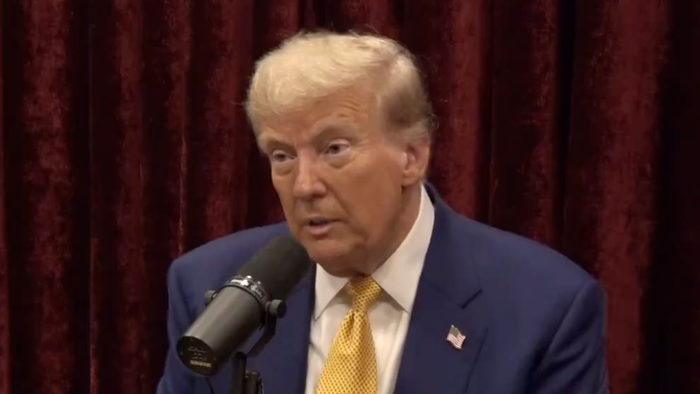In recent developments surrounding the Joe Rogan Experience podcast, tensions have emerged between Rogan’s team and Vice President Kamala Harris’s campaign regarding a potential interview. While Harris has not declined an interview outright, her campaign has proposed strict conditions, including a limited time frame of one hour and requiring Rogan to travel to her location. Recently, it was announced that Senator JD Vance would take Harris’s place for an interview on Rogan’s show, highlighting the ongoing struggle for prominent media coverage among political figures. Rogan emphasized that he believes a more natural and engaging conversation could arise from conducting interviews in his Austin studio, rather than adhering to the condensed, controlled format suggested by the Harris campaign.
The viral interview with former President Donald Trump also drew significant attention, as Rogan sat down with him for a three-hour discussion. However, there were concerns of censorship concerning the episode’s distribution, particularly on YouTube, where users reported difficulty in locating the interview through standard search methods. Rogan addressed these censorship fears by sharing the entire interview on X (formerly Twitter), stating that it deserved to be accessible to the audience without restrictions. Despite these challenges, the interview managed to amass an impressive 37 million views, showcasing the public’s desire to hear unedited and candid conversations with political figures.
As discussions surrounding censorship and media coverage intensified, various commentators online voiced frustrations over the apparent suppression of the Rogan-Trump interview. Many suggested that YouTube’s algorithms were actively burying the content, creating an environment where mainstream media outlets were struggling to maintain their foothold against alternative media platforms like Rogan’s podcast. This situation indicates a growing conflict between traditional journalism and emerging independent media, where audiences are finding new avenues to consume information outside established channels. The immediate reactions highlighted a perceived failure of traditional platforms to effectively handle the evolving landscape of political discourse and public interest in uncensored content.
Moreover, the mainstream media landscape itself is facing a challenge. Several major newspapers, historically known for their political endorsements, have refrained from supporting any political candidates in upcoming elections. This unusual decision sparked controversy, especially within institutions like The Washington Post, where owner Jeff Bezos cited “credibility concerns” as a primary reason for avoiding an endorsement of Harris. This admission reflects broader concerns over the reliability of major media outlets, as citizens increasingly turn to alternative sources for information. The rising popularity of off-the-cuff podcasts and social media reports emphasizes a shift in public trust toward nontraditional journalism.
In tandem with these developments, the “censorship-industrial complex,” which includes various media watchdogs and organizations, reacted defensively to the rise of alternative media. There appears to be a concerted effort among traditional media outlets and affiliated entities to regain credibility and control over information dissemination. Such reactions indicate a deeper existential crisis, as many established media institutions grapple with declining trust from the public. The momentum for change within the media landscape reveals a significant shift towards liberty and freedom of information, contributing to an ongoing “Overton Window” shift where alternative perspectives become more welcomed.
As it stands, the dynamics of media and political discourse are evolving. There remains potential for Harris to eventually join Rogan for an interview, which could play a role in shaping the narrative and influence surrounding the political campaign. If she does decide to participate under more favorable conditions, it could serve as an opportunity for her to connect with a broader audience in an unfiltered dialogue. However, the rising tensions between established media, alternative platforms, and political candidates signal a complex and rapidly changing environment as the 2024 elections approach. The interactions within this new media landscape will be critical in determining the shaping of narratives and public perception in the coming months.

